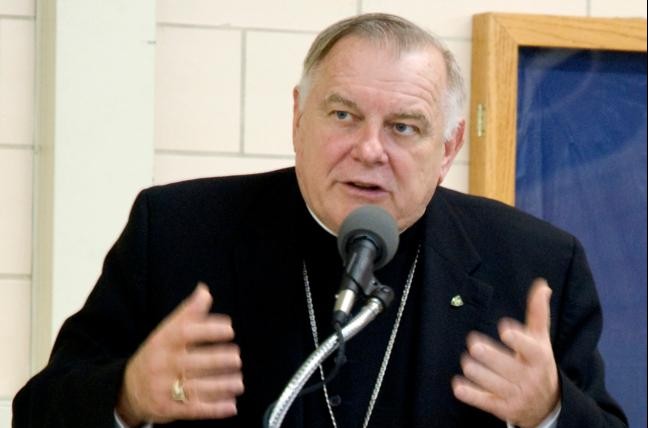WASHINGTON (CNS) — The federal Environmental Protection Agency’s new environmental justice initiative, known as EJ 2020, was praised in a Nov. 4 statement from Archbishop Thomas G. Wenski of Miami, chairman of the U.S. bishops’ Committee on Domestic Justice and Human Development.
The 66-page EPA document, issued Oct. 27, has as one of its primary goals deepening the “environmental justice practice within EPA programs to improve the health and environment of overburdened communities.”
“The concern for the good of people, especially the poor and vulnerable communities, is one of the central messages in Pope Francis’ encyclical on the environment,” said Archbishop Wenski, referring to “Laudato Si’, on Care for Our Common Home.”
[hotblock]
The EPA defines “overburdened” communities as “minority, low-income, tribal or indigenous populations or geographic locations in the United States that potentially experience disproportionate environmental harms and risks. … The term describes situations where multiple factors, including both environmental and socioeconomic stressors, may act cumulatively to affect health and the environment and contribute to persistent environmental health disparities.”
One example given in EJ 2020 is the need to reduce lead levels.
“Lead exposure among young children has dramatically reduced over the last three decades due to federal and state regulatory efforts to reduce the amount of lead in air, drinking water, soil, paint, household dust, consumer products, food and occupational settings,” the document said.
“Unfortunately, that progress has not been realized equally across the United States and lead exposure remains one of the top childhood environmental health problems that impacts minority and/or low-income populations. For example, the average blood-lead levels remain unequally high among non-Hispanic black children when compared to Mexican-American and non-Hispanic white children.”
“We welcome efforts by the EPA that recognize what the pope calls ‘integral ecology,’ where respect for human life and well-being go hand in hand with environmental protection,” Archbishop Wenski said in his statement.
Another EJ 2020 goal is to demonstrate progress on significant national environmental justice challenges, with a specific focus on lead disparities, drinking water, air quality and hazardous waste sites.
Environmental justice is the term used to correct disparities in the treatment of certain populations — often poor and minority — by polluters. Corporations that discharge toxic chemicals into the water, air or earth are often located in neighborhoods where the residents are poorer and less able to organize effectively to stop the polluting. A vicious cycle ensues as few people with financial means or mobilizing savvy choose to move to such neighborhoods, and the children living in those areas are adversely affected by the pollution surrounding them.
[hotblock2]
“EPA seeks the fair treatment and meaningful involvement of all people with respect to the implementation of environmental programs, regardless of their race, income or other factors,” EJ 2020 said.
Farmworker protection also is covered in EJ 2020. “EPA is implementing stronger protections for the nation’s 2 million agricultural workers and their families working on farms, forests, nurseries and greenhouses, which will afford farmworkers protections that are already afforded to workers in other industries,” the document said.
Climate change is also included. “EPA will help increase the resilience of the most vulnerable people and places by improving their capacity to predict, prepare for and avoid adverse impacts from climate change,” EJ 2020 said. “Adapting to the changes that are already under way, and preparing for future climate change, can help reduce the risks these communities will face from climate change.”
This is the second environmental justice document issued by the EPA. The first, EJ 2014, was released in 2011.
The full 2016 document — titled “Environmental Justice 2020 Action Agenda” — can be found at http://tinyurl.com/nhexm87. The first, EJ 2014, was released in 2011.
PREVIOUS: First ‘Gold Mass’ for scientists to be celebrated at MIT Nov. 15
NEXT: Religious, lay leaders react to Trump win in presidential election




Share this story